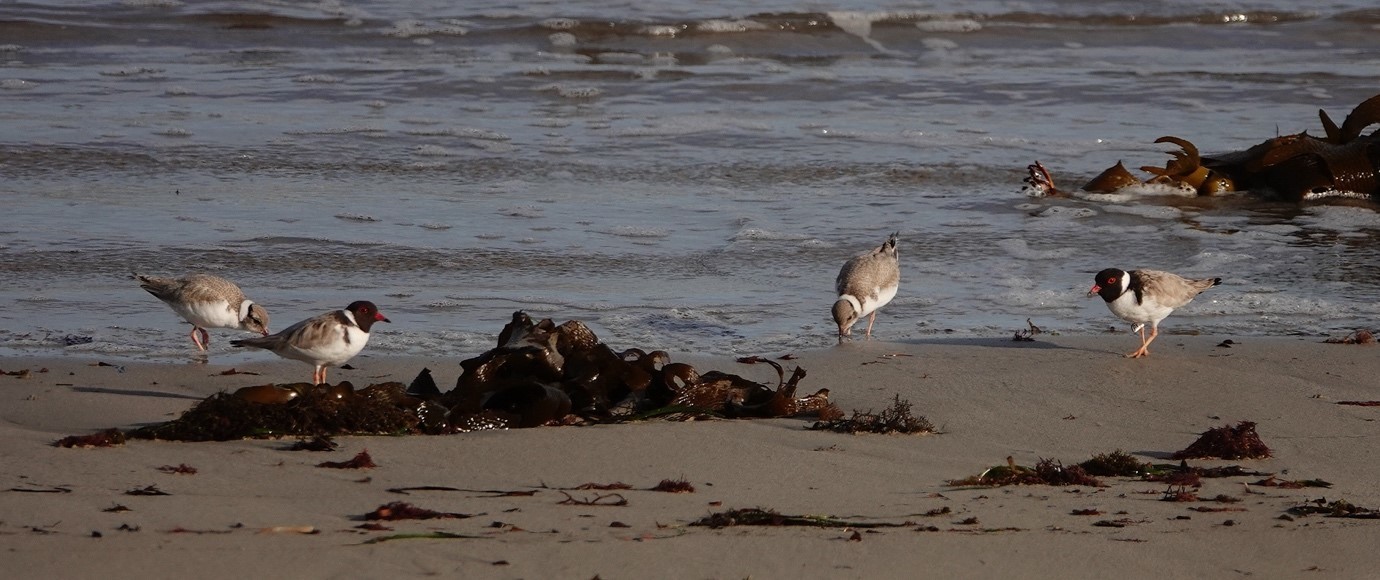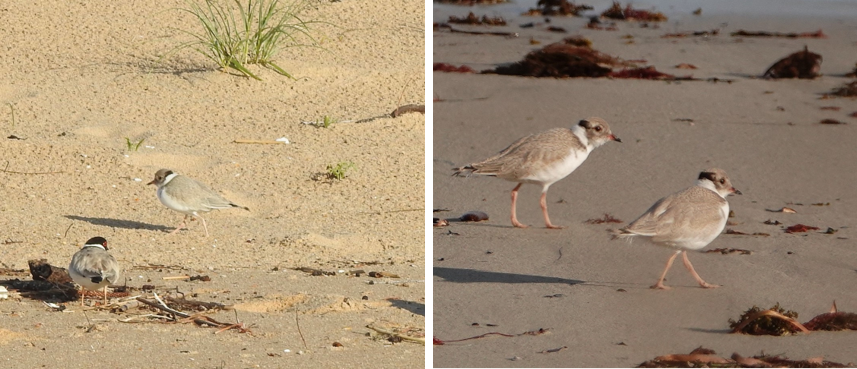Three hooded plover chicks on the Fleurieu Peninsula have made it to the all-important fledgling stage – which is when these threatened birds can fly and their chance of survival is greatly increased.

The chicks – 2 at Victor Harbor and 1 at Watson’s Gap (near Hayborough) – are the first fledglings for the breeding season, which kicked off in August.
Hooded plovers are Australia’s most threatened beach-nesting bird and with only about 70 across Adelaide and the Fleurieu Peninsula, every bird that makes it to fledging counts.
Green Adelaide Coast and Seas Team Leader Tony Flaherty said this is a great start to the breeding season for “hoodies”, which face many challenges to successfully raise their families.
“It’s really encouraging to see these hoodies reach fledgling stage – it’s a positive sign for the future of the species and is testament to the dedicated work of our staff and volunteers that look after the welfare of these birds and their habitat,” Mr Flaherty said.
“Hooded plover chicks can’t fly for the first 5 weeks of their life, which makes them very susceptible to disturbances and predators, such as magpies, ravens, silver gulls, foxes and off-leash dogs.
“So to see them reach the stage at which they can fly and flee from predators is an important milestone.”
As part of the Hooded Plover Project, staff and volunteers from Green Adelaide, Landscapes Hills and Fleurieu and BirdLife Australia work together to help the birds across Adelaide and the Fleurieu Peninsula – which is one population.
The hooded plover breeding season typically begins from the start of August and continues until around March each year.
Last year, 18 chicks made it to fledging – a figure only exceeded once in the past 10 years.
Landscapes Hills and Fleurieu Coast and Marine Project Officer Caroline Taylor said the fledglings are a “welcome success” for the parent birds and local ‘Friends of the Hooded Plover Fleurieu Peninsula’ volunteers, who have watched over the eggs, and then the chicks, for the past few months.
“The fledgling at Watsons Gap had a particularly tough start – high tides washed their eggs down the beach but luckily the parents found the 2 eggs, one of which has of course has grown into this fledgling,” Mrs Taylor said.
“Local beach walkers have helped the birds by leashing their dogs near the nesting sites, reading and following the updates from volunteers and on signs, and walking near the water’s edge to make sure they don’t disturb the birds.”
“The hooded plover breeding season coincides with peak time to visit the beach, so we are encouraging everyone across the Fleurieu and metro coast to be aware of these birds and share the beach with them.”
Photographing this species – including their eggs – also comes with extreme risks to the birds, so beach-goers are advised to view from a distance instead.
The Hooded Plover project is jointly coordinated by Green Adelaide, Landscapes Hills and Fleurieu and BirdLife Australia, with support from local councils. It is funded by Green Adelaide and Landscapes Hills and Fleurieu, through funding from the Australian Government’s National Landcare Program.
